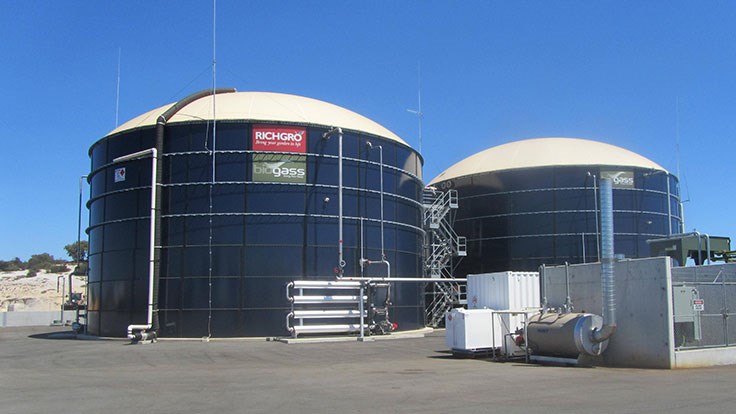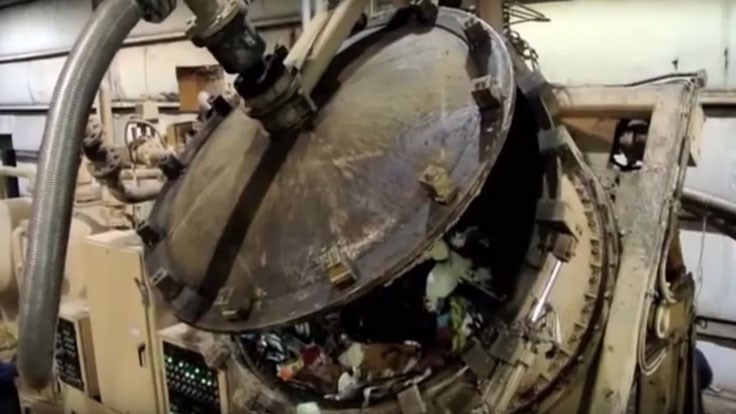Richgro, a copmost company based in Jandakot, Western Australia, teamed up with several U.K. companies to open its own anaerobic digestion (AD) facility in March.
The plant uses pumps and mixers from Landia, with U.S. headquarters in Cary, North Carolina; gas generators from Edina, Dublin, Ireland; tanks and storage from Kirk Group, Lancashire, England; and flare stacks from Uniflare, Warwickshire, England.
Around 100 tons of food and liquid waste (approximately 35 percent dry solids) is trucked in each day to the Jandakot plant from supermarkets, abattoirs, fast food chains, breweries and soft drink manufacturers. The facility has a depackaging system to remove contaminants. Where possible, leftover packaging is sent for recycling, even to the extent of waste plastics be reused. The feedstock is then put into a blending tank to ensure that the PH balance, proteins fats and other organics are in a good ratio to aid digestion, which is checked by the on-site laboratory before being placed into a buffer tank. The buffer tank acts as a store for the organic matter for the intermittent feeding of the digesters throughout the day.
This organic matter is then fed into two 2,500 cubic meter capacity glass fused to steel digesters, which have Biodome double membrane gasholders on the top, supplied and constructed by Biodome Asia (http://www.kirk-asia.com/), a Kirk Group subsidiary located in Selangor, Malaysia. In addition, Biodome Asia also supplied the 12,360 cubic feet open-topped blending tank, a 12,360 cubic feet feeding tank with steel roof and a 17,658 cubic feet digestate storage tank, also with steel roof.
The feedstock that has passed into the primary digester has its own external heating system to maintain the temperature of the digesters, which uses the cogenerated surplus heat from the Edina gas engine to maintain a temperature of approximately 97 degrees Fahrenheit.
Digester mixing is with Landia’s externally-mounted GasMix system. For pretreatment, GasMix is designed to reduce viscosity by 30 percent (as tested by the University of Aarhus in Denmark) and usually needs to run for 7-10 minutes in the hour.
The gas is then cleaned up using a Uniflare flare stack before being turned into energy through an Edina combined heat and power (CHP) engine with electricity being consumed on site as well as exported to the grid. The heat is used in new on-site greenhouses for helping to grow blueberries (a brand new revenue stream for Richgro), as well as maintaining the plant’s temperature.
Water and digestate are used within the composting facility.
Energy is being harnessed by Richgro’s operations to power all of the site’s equipment, with the surplus exported into the Western Australian electricity grid. Over a 20-year lifespan, the plant is also expected to save 142,722 tons of carbon dioxide emissions.
Less than two months since commissioning, the Richgro facility’s processing of mixed commercial and industrial food waste was giving a biogas yield of 4,874 cubic feet per ton. The process capture efficiency was recorded at 91 percent, with one ton of food waste generating 415 kilowatts of energy and 435 kilowatts per hour from the single onsite CHP, which is running at 100 percent, producing up to 1.2 megawatts.




